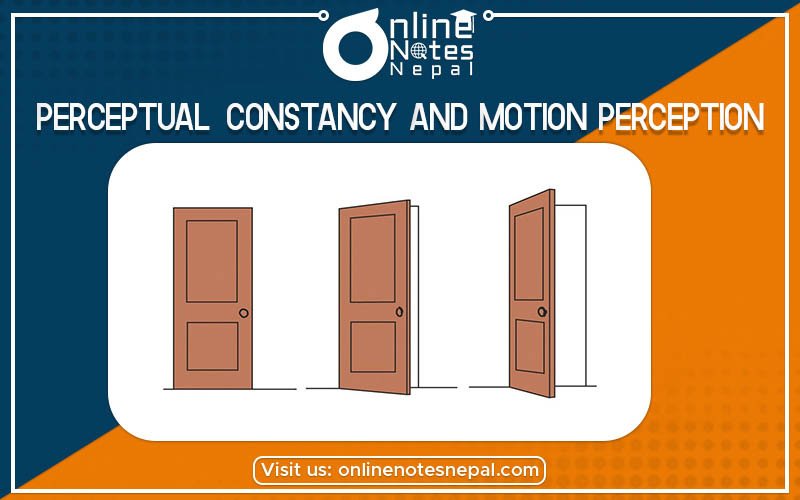Published by: Zaya
Published date: 15 Jun 2021

Perceptual Constancy and Motion Perception are the sub-headings of the perceptual organization. Perceptual constancy, also called object constancy, or constancy phenomenon, the tendency of animals and humans to see familiar objects as having a standard shape, size, color, or location regardless of changes in the angle of perspective, distance, or lighting. They are described below:
It refers to the perception of objects as relatively stable despite changes in the stimulation of sensory receptors. The image of an object seen from a different angle is different on the retina; we don’t believe the object is changing shape. This is called Perceptual Constancy.
Shape, size, color (brightness) are some examples of perceptual constancy.
The perception of the shape of an object doesn’t change even if the image on the retina changes. Therefore in shape constancy, an object appears to maintain its shape despite marked changes in the retinal image. For example; A door is continuously have seen to be rectangular.
It refers to those familiar objects which do not change in perceived size when viewed from different distances. It depends upon our familiarity with the objects and on our ability to judge distance. For example; a car 10 feet always will cast a retinal image 5 times as large as the same car, which is 50 feet away.
It refers to the experiences at brightness stays relatively constant despite great changes in the amount of physical energy reaching our eyes. For example; coal is still bright during sunlight.
It is the process of inferring the speed and direction of objects that move in a visual scene given some visual input. This perception is a scene based on visual, vestibular and proprioceptive inputs. Although this process appears straightforward to most observers, it has proven to be a difficult problem from a computational perspective, and extraordinarily difficult to explain in terms of neural processing.
How do we see motion?
First-order motion perception occurs through specialized neurons located in the retina, which track motion through luminance. However, this type of motion perception is limited. An object must be directly in front of the retina, with motion perpendicular to the retina, in order to be perceived as moving.